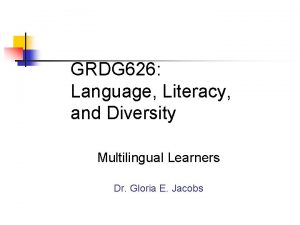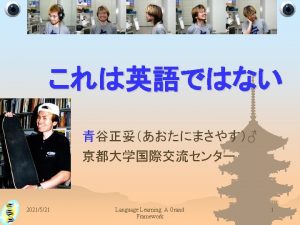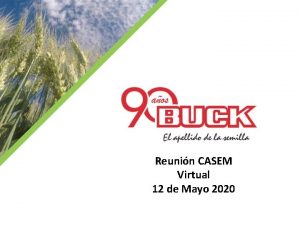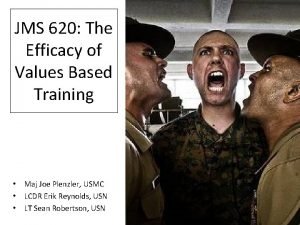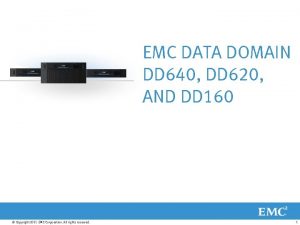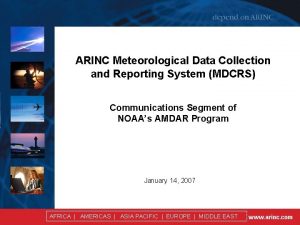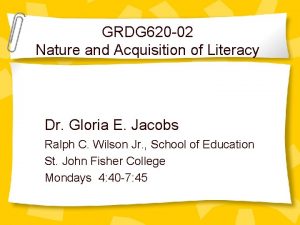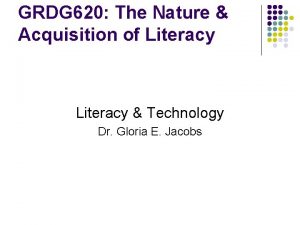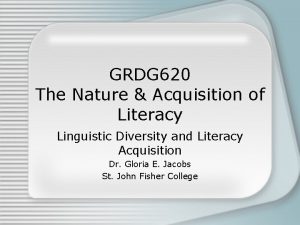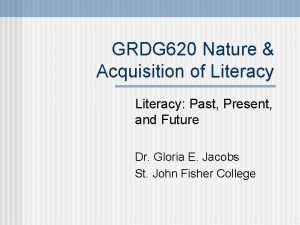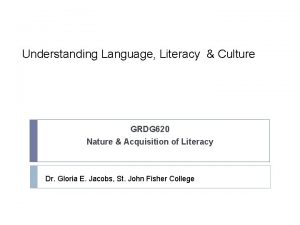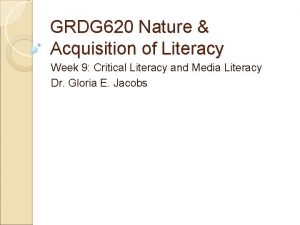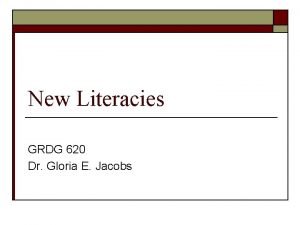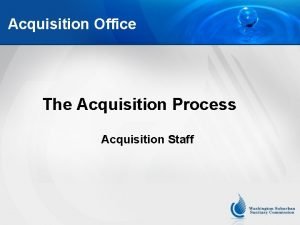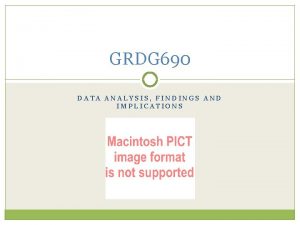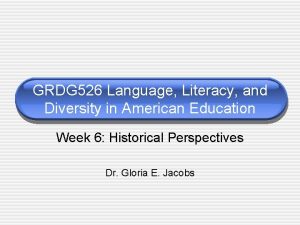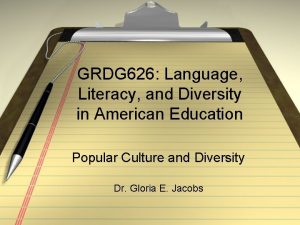GRDG 620 Nature Acquisition of Literacy Implications and













- Slides: 13

GRDG 620 Nature & Acquisition of Literacy Implications and Applications Dr. Gloria E. Jacobs

Agenda n n n Sharing Finish book sharing jigsaw Small Group discussion Break Writing workshop Next Week

Guided Discussion n n What are funds of knowledge? (Moll & Gonzalez). How are funds of knowledge different from schema or background knowledge? What major idea or controversy is Delpit trying to dispel? Describe Delpit’s disagreement with Gee. Drawing from the readings, make a list of as many ideas as you can for how can teachers help students achieve. Match those ideas to theories of literacy acquisition and learning we have studied. Include the citation.

Break

Writing Workshop Part 1 n Take 3 colored pencils n n With one color, underline the claim. (Your definition of literacy) With another color, underline the evidence (with citations) you use to support your claim. n n n Do you synthesize the readings (show more than one scholar is saying the same thing, but also showing how they add their own spin? Do you cite as needed? With a third color, underline YOUR stance. Take a look at the pattern of writing uncovered by the colors. What do you notice? What revisions do you have to make?

Writing Workshop Part 2 Read your part 2 draft aloud to one another then have a conversation about the draft n Listener n n n Does the author explain how literacy instruction should occur? Is the explanation consistent with the author’s definition of literacy and understanding of how people acquire literacy? Does the author identify and explain how different theories we learned in this course inform instructional approaches. n Does the author provide examples through the work of Maier, Mays, Gatto, Meier, Gainer & Lapp, Moll & Gonzalez, Delpit, and Ikpeze & Boyd. n Author role: n n Ask the listener to pay attention to any additional areas you are unsure about. Listen to your partner’s questions. Answer honestly and nondefensively. Make revisions as needed.

Final Paper n n n Revise your part 1 Add in part 2 (see syllabus). This will come from your midterm paper and will be revised to be more focused. Revise your part 3 Add transitions between the three pieces Add an introduction and conclusion

Transitions n n n Guide your reader through your paper Explain how you see one idea connecting to another Serve as sign posts to remind your reader of what you’ve done and let them know where you’re going.

Transition Example 1 n Moving from the introduction to the body of the paper. To understand how participation was constructed, I turn to the New Literacy Studies (NLS) to define literacy and consider notions of power. Following a review of the literature on participation in learning environments, I describe the study from which I draw this data. Based on the findings of this study, I conclude with a discussion of implications for teaching and research.

Transition Example 2 n Moving from one definition to another. Showing how one idea connects to another. Given the above conceptualizations of power, it is necessary to place a local literacy event, such as the creation of a Power. Point presentation, within the larger context in which it occurs. The concept of the literacy event is taken from Heath (1982) who defines an event as “occasions in which a piece of writing is integral to the nature of a participants’ interactions and their interpretative processes” (p. 50). Starting from this definition, Barton and Hamilton (2005) describe literacy events as identifiable and bounded interactions with texts that are part of literacy practices, and literacy practices are namable ways of using literacy within specific areas of life and include observable social relations.

Transition Example 3 n To connect paragraphs refer to the concept discussed in the previous paragraph. Within a literacy event, Bloom et al. (2005) identify three ways of understanding power relations…. When considering issues of power, Bloome et al. (2005) also remind us that the power within a classroom consist of is constructed through at least three levels of power relations a) between students and teachers, b) among students and c) between the students and the school as a social institution.

Transition: Example 4 n Showing how concepts are used for explanation, understanding, or application. Applying theoretical and analytic frames of relations of power and models of power to the described literacy event reveal different insights into what occurred within the moments discussed in this article. These insights are explored in the findings and discussion sections.

Next Week n n n Kucer (2009). Chapter 12 Larson & Marsh, Chapter 6 No wiki posting needed
